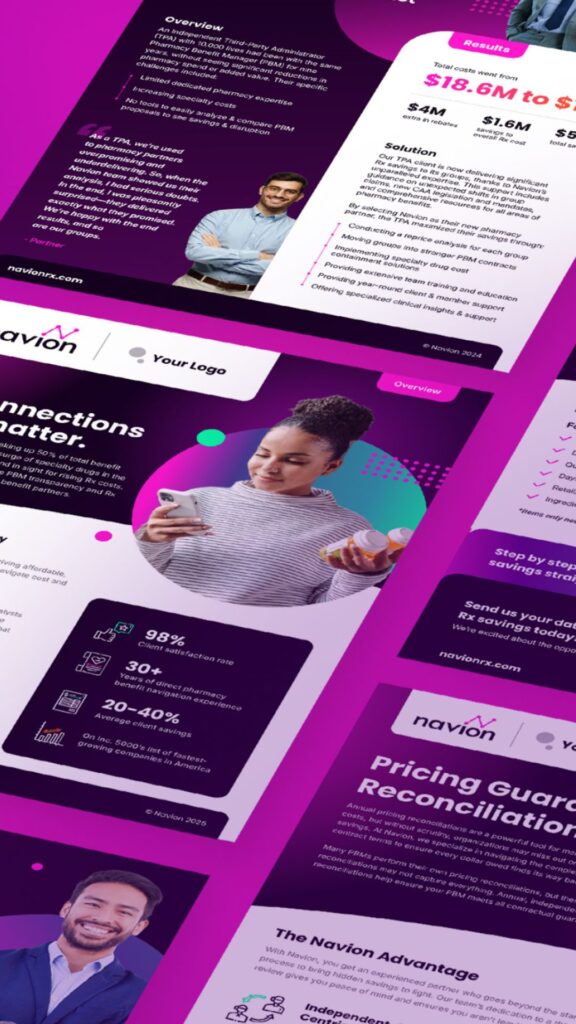By Beckie Fenrick, PharmD, MBA; Emily Crisano, PharmD, RPh; and Jason Peterson, RPh
Weight management isn’t just a personal issue—it’s a growing challenge for employers, plan sponsors and the healthcare system at large. With over 70% of American adults classified as overweight or obese, the impact on health outcomes and healthcare costs is significant. In fact, obesity rates have more than doubled since the 1970s, highlighting the urgent need for effective, scalable weight management strategies.
The Clinical and Financial Impact of Obesity
Obesity is associated with several serious health conditions, including hypertension, type 2 diabetes, coronary heart disease, stroke and certain types of cancer.
In addition to adverse health outcomes, obesity can lead to increased healthcare costs. According to a 2023 report analyzing private insurance claims from 2021, individuals diagnosed as obese or overweight had average annual health costs of $12,588, compared to $4,669 for those without such diagnoses.

The Current Landscape of Weight Loss Therapies
Optimal weight loss strategies begin with lifestyle modification, including reduced calorie intake, exercise, nutritional counseling and behavioral modification.
Behavioral changes are essential for long-term success, but, in some cases, medications may be required alongside lifestyle interventions. Here are the weight loss medications available on the market today:
| Brand Name | Adipex-P | Xenical | Contrave | Qsymia | Saxenda | Wegovy | Zepbound |
| Generic name(s) | phentermine | orlistat | bupropion/ naltrexone | phentermine/ topiramate | liraglutide | semaglutide | tirzepatide |
| Average Weight Reduction | 3% of body weight after 12 weeks | 3% of body weight after 52 weeks | 8% of body weight after 56 weeks | 10% of body weight after 52 weeks | 7% of body weight after 56 weeks | 16% of body weight after 68 weeks | 20% of body weight after 72 weeks |
| Mfg. Copay Card | No | No | Yes | Yes | Yes | Yes | Yes |
| Monthly List Price (WAC) | $69 Brand $4.50 Generic | $650 | $625 | $224 | $1,349 | $1,349 | $1,086 |
Saxenda, Wegovy, and Zepbound are GLP-1 receptor agonists that mimic glucagon-like peptide-1 to reduce body weight—often the preferred choice due to their high efficacy.
Coverage Challenges for Weight Loss Medications
Despite the American Medical Association’s classification of obesity as a chronic disease, coverage for weight loss medications remains limited. A 2024 report found:
- Only 18% of employers with 200+ employees cover GLP-1s for weight loss
- Of those offering coverage, 33% reported significant impacts on prescription drug costs
- Among employers not currently covering GLP-1s, 62% are unlikely to begin coverage in the next 12 months.
- In that same survey, only 3% of respondents stated they are “very likely” to begin coverage in the next year.
Medications work best when combined with lifestyle changes. Supporting both medication and behavioral programs can improve weight loss results and offer better ROI for plan sponsors.
Strategies for Plan Sponsors: Managing Cost and Access
Pharmacy Benefit Coverage (Managed within PBM)
| Strategy | Description |
| Prior Authorization – FDA-Approved Use | Restricts use to FDA-approved indications, resulting in higher utilization and higher rebates |
| Prior Authorization – Narrow Criteria | Restricts to smaller populations (e.g., severe obesity), resulting in lower utilization and rebates. |
| Comprehensive Weight Loss Program | Includes access to medication and lifestyle support (e.g., diet, exercise, coaching) via internal or external programs like Noom. |
Non-PBM Access Options
| Access Type | Program Example | Funding | Description |
| Direct Discount Programs | LillyDirect (Zepbound), NovoCare (Wegovy) | Member pays full cost | 4-week supply discounts directly from manufacturer (Zepbound: $349–$499, Wegovy: $499) |
| Supplemental Coverage | Processed at point of sale | Plan sponsor + member | Plan sponsor contributes a set amount; member pays the remainder |
| HRA Reimbursement | Lifestyle program with medication access | Member initially; plan sponsor reimburses via HRA | Member self-pays and gets reimbursed upon lifestyle program participation |
| Carve-Out Program | Obesity management carve-out | Plan sponsor | Separate program covering medication + lifestyle support outside the core PBM |
Standalone or Add-On Programs
| Program Type | Description | Funding |
| Lifestyle Modification Support | Coaching, education, diet/exercise plans (virtual or in-person) | Varies by employer plan |
There’s no one-size-fits-all solution when it comes to weight management benefits—but with the right strategy, the impact can be transformative. Whether you’re navigating coverage decisions, cost concerns, or program design, Navion’s experts are here to help you evaluate your options and craft a solution that works—for your organization and your people.










